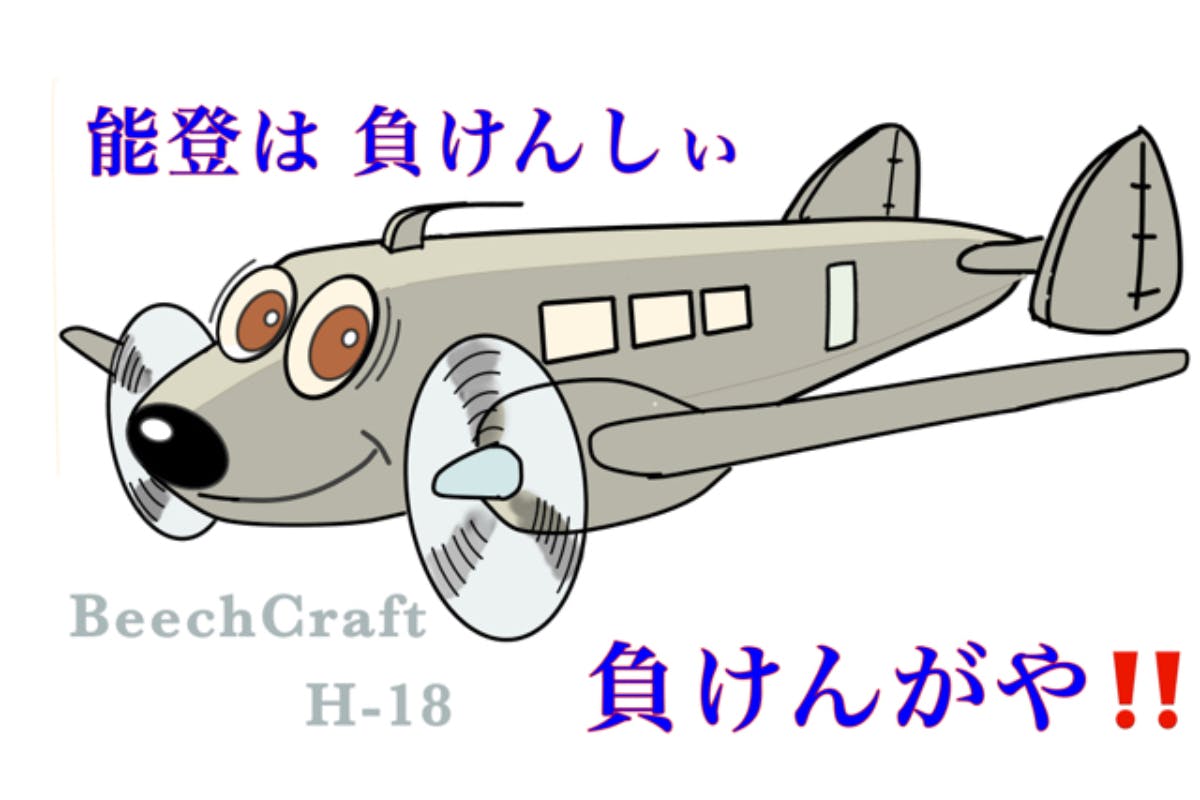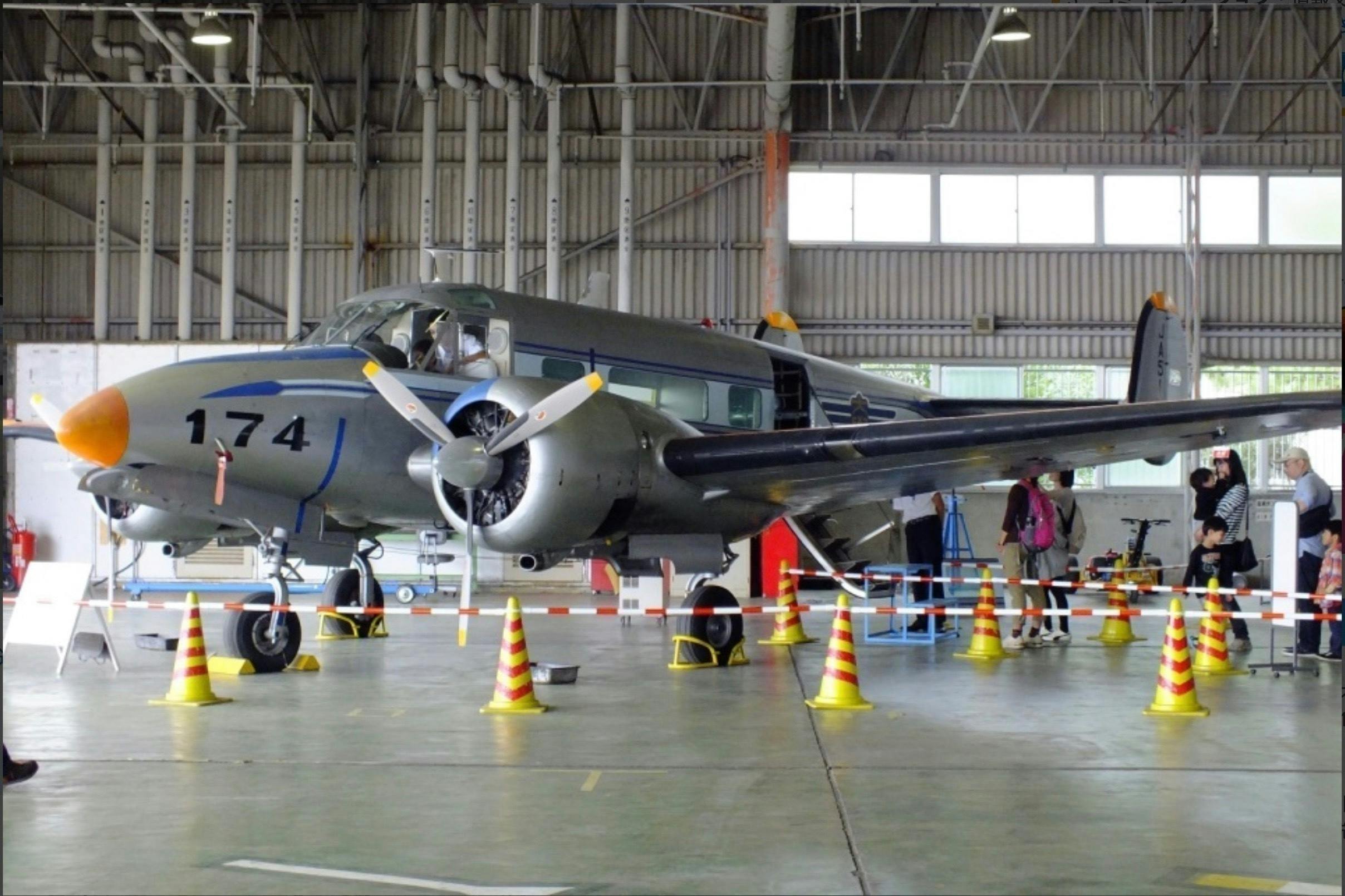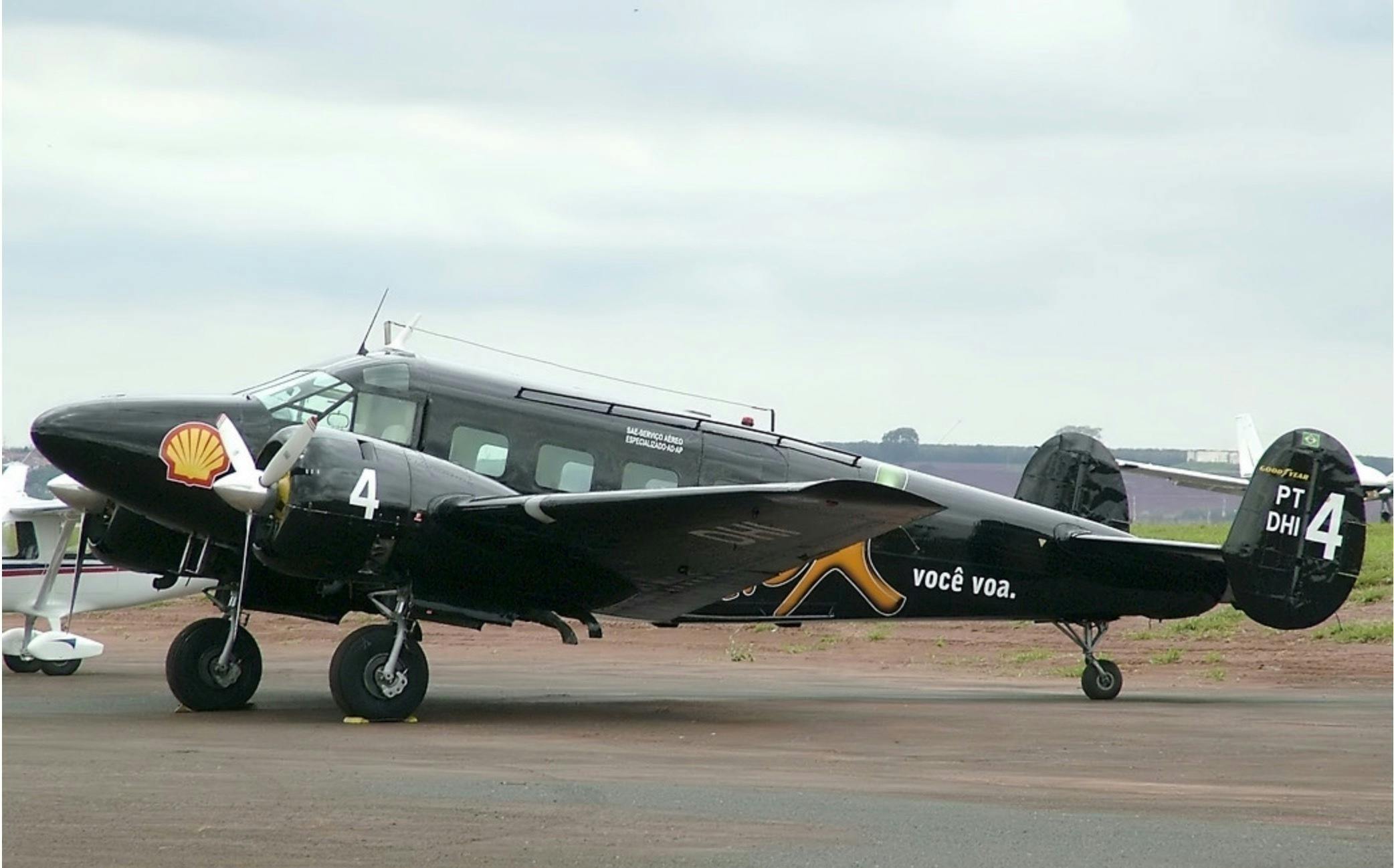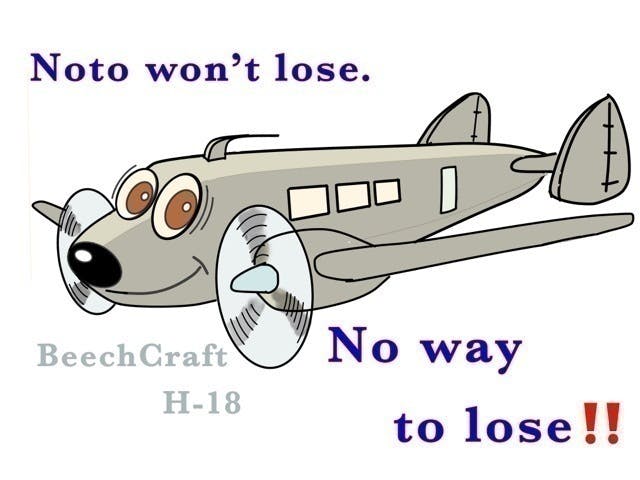自己紹介
橋本徹1950年生。全日空で44年間乗務に専念。退職後、自作機(米国Zenith社製二人乗りプロペラ機×3機)を製造。航空文化振興会代表。
このプロジェクトで実現したいこと
再生したビーチクラフトH-18機を使用し、能登空港をベースとした、能登の観光に特化した事業の展開。
プロジェクト立ち上げの背景
事項参照
現在の準備状況
ビーチクラフトH-18を再び空へ、能登にエールを!
はじめに
航空大の宮崎本校の格納庫の片隅に、一機のビーチクラフトH-18が30数年に渡り眠り続けています。
誰に意識されることもなく、なんで居るの?とも、苦にもされず、いいね!とも言われず、タイムカプセルの中身
だけが何故か、そのままポツンとそこに置いてあるような状態で、一機のビーチクラフトH-18が30数年来、宮崎
の航空大の格納庫の片隅で静かに眠り続けています。
しかし、この子は近々、訓練機が増機されることで格納庫を追い出されてしまいます。それはすなわち、この子
にとって“スクラップ”を意味します。例えるなら、保健所に収容された犬や猫が1日に少しずつ移動する檻に入れら
れ、ある日数が経過すると殺処分される場所まで追いやられるアレと同じです。
そして、そのタイムリミットが2024年3月31日なのです。
でも、私たちは、この子に再び空へ飛翔して欲しいと願っています。そうです。私たちは、この子を鉄クズとなる
運命から救い出し、レストアし、飛翔して欲しいと願っています。
専門家に診てもらったところ、屋内で保管されていたこともあり比較的、綺麗な状態だとの評価です。ただ、エン
ジンやプロペラはオーバーホールが必要で、脚周りも交換し、機体スキンも全体的に張り替えなければなりません。
このレストアの作業は、3月末日までに宮崎から能登空港へ舞台を移し、実施したいと考えています。そして、その
レストアに要する費用を、皆様のご好意にお願いできればと考えています。
この子をレストアして、再び飛翔させることで、『能登の“復旧そして復活の象徴”』としたいのです。さらにそれを
適宜、全世界に発信することで能登の復興と復活を大々的にアピールし、心が折れる復興へのモチベーションを高める
ツールともしたいのです。
ビーチクラフトH-18って?
ビーチクラフトH-18は、ダグラスDC-3と同世代(1930年〜40年代)の飛行機です。世界的規模では8,000機以上
生産されました。星型エンジンを搭載した九人乗りの双発機です。日本では主に海上保安庁他、全日空、日本航空、東
亜国内航空等で路線をカバーすると同時に、航空大でも訓練機として4機が登録されていました。そんななか、この子
はたまたま原型を留めている日本では最後のビーチクラフトH-18で、そして、たまたまモデルH-18の最終生産機です。
Pic-1
日本では44機が登録され日本の空を飛んでいました。偶然にも航空大の格納庫で何となく保管されていたこの子はJA
5174の登録記号で飛んでいましたが、昭和61年に抹消登録された記録を最後に以来、格納庫に引きこもりです。
ダグラスDC-3は、今現在でも世界レベルで100機以上は現役で飛んでいます。中にはエアラインで就航している元気な
79歳もいます。同様に、ビーチクラフトH-18も世界レベルで100機前後は現役で飛んでいるかと推定します。
片や、国内数ヶ所で現存している機体もありますが、それらは単なる置物、いわば剥製に過ぎません。
そんな中、この子を再び飛ばすことは出来ないものか、何とか動態保存してあげたいと考えています。日本で唯一現存
するクラッシックプレーンを鉄クズにしたくない、その文化を継承したい、美しい姿のまま後世に残したい、日本の
航空史上国宝級とも言える奇跡の存在が記された1ページを破り捨てたくない、とその一念からのお願いです。
Pic-2
因みにこれは、今もブラジルの空を飛んでいるビーチクラフトE-18(尾輪式タイプ) です。このように美しく復元する、
そのためには、まず「場所」が必要です。つまり、格納庫です。
そこで、様々な方面にこの子のためのスペースを確保していただけないでしょうか?と手当たり次第に当たったものの、
いずれも対応もバツ。しかし、最終的に日本航空学園にお願いしたところ同学園の能登キャンパスの敷地の一部を貸与
していただけることになりました。そのような経緯から、本クラウドファンディングでは、まず宮崎→能登空港までの
陸送作業、そして、修理期間を1年半〜2年と見込んでいます。そして、修理後の諸々の維持費(パイロットの人件費を
含め。ただしこれは、ボランティアで募りたいと計画しています)です。
修理・レストアには八尾空港に本社を置くAero Lab社に依頼します。同社からもプロジェクトに賛同していただき、
利益など度外視(見込まず)で協力していただけることになりました。
また、この子には出来るだけ長く生きて欲しい、飛び続けて欲しいとの願いから、レストア完了後は能登空港をベース
とし、”能登の観光”に特化した事業を展開したいと考えています。具体的には福井空港ー能登空港ー富山空港を基軸に
した観光事業です。また夜間時間帯に貨物専用の航空使用事業も展開できればと考えています。
数年後には、この子がメディアで取り上げられる機会も度々、あるかと思います。
その時は既に、災害から数年が経過後とは言え、どの程度まで復活できているかは全く未知数です。多分、その傷跡は
その頃になっても、広く深く刻まれたままだと察します。
そして、支援の勢いも時間経過とともに衰退気味になっている頃かもと思われるところ、その頃には緩んできているか
も知れない社会の風潮や、災害に対する防災意識を喚起できるキッカケにしたいとも考えています。
動態保存の意義
車と同じで、飛行機も丁寧にメンテナンスさえすれば、いつまでも現役でいてくれます。愛情を注ぎ、大切に取り扱って
あげさえすれば、半永久的に可動します。機械とはそういう極めて忠実でカワイイものだと思います。
30数年来ほとんど無傷で残存したこの子は、非常に稀な希少価値を内に秘めています。
それを置き場所がない、保管できないとそれだけの理由だけでスクラップの鉄クズにしてしまうことは人類の歴史、日本
の文化、文明はたまた美術や芸術、さらには科学の進歩なり発展に対する「裏切り行為」と言っても過言ではない、この
上なく野蛮な行為ではないでしょうか。
この子をいつまでも飛べる状態に保つことは、日本の航空の文化の拡がりを促進するものです。のみならず、日本の航空
産業の発展にも寄与するものです。
博物館に展示するだけでなく、可能な限り飛べる状況に保つ動体保存には、このようなことから、極めて高い「社会性」
を有するプロジェクトだと考えます。
動物愛護の精神も大切ですが、同時にモノに対する愛着も持たなくてはならないと考えます。
骨董品収集のココロも、美しいものはいつまでも残さなければならないと言う精神の表れと同じだと思います。
そこでこの子を、能登空港をベースにレストアすることで、能登の復興・復活にかぶせ併せたいと考えます。
能登の復旧、復活に向け
この子のレストア活動が、そのまま能登の復旧に繋がり支えることは出来ません。また、金銭的な支援も出来ません。
しかし、勇気づけられる応援歌なり、エールを贈り続けることは出来ます。
この子のレストア計画を『 “能登は負けんが” プロジェクト』と称し、進めたいと考えています。
「能登は負けんが」とは地元の言葉で、「能登は負けないのだ」とか「能登は負けないのだから」とのニュアンスの
方言です。自然災害に打ち勝ち、これからも粘り強く、復興に立ち上がる決意を秘めた言葉です。
かの「私、失敗しないので」と同じく、「私は、失敗する筈がないのだ」とか「私に、失敗なんてあり得ない」とかの
イメージでしょうか。
そのように、本プロジェクトを通じ、自然災害から立ち上げる能登に力強いエールを送り続けたいのです。取り組めば
必ず達成できる復活を、この子をレストアすることで立証したいと思います。そして、能登の復活にほんの少しでも弾み
をつけ、多少なりとも復興を加速させるキッカケに出来ればと考えています。
復活へのマイルストーン
まず、宮崎から能登空港への陸送です。そして搬入後、リベット作業で大まかな形に修復します。リベットとは沈頭鋲
と呼ばれる、言わばホッチキスのようなものです。これは整備士資格を持たない私どもメンバーでも出来ます。
エンジンとプロペラピッチを制御する装置はアメリカでオーバーホールの予定です。オーバーホールを終え帰国した
エンジンとプロペラピッチを制御する装置を整備士が取り付けます。飛行計器パネルに関しては、40年近く経た航空界で
飛ぶため、新たに搭載が求められる計器類がいくつかあります。さらに、従前のままでは不具合があり、ほとんど全部の
取替えになるかと思われます。
それからペイント作業に移ります
ペイントデザインは、能登の復興・復活の象徴を表現したアイデアを公募したいものです。もちろん、「能登は負けんが」
のキャッチコピーも機体のどこかに織り込みたいと考えています。
完成までは、開始から1年を目標に取り組みます。
最後に必要とされる費用ですが宮崎→能登空港への移送費、格納庫建設費、米国でのオーバーホール費、整備費、エンジ
ン、プロペラ等の米国までの往復移送費、修理費、それに人件費、宿泊費、返礼品等々でアバウトではありますが、ザッ
クリ5,500万円を目標額としてクラウドファンディングを募ります。
そのクラウドファンディングに要する期間は、航空大の格納庫の都合から約2ヶ月になります。
具体的なクラウドファンディング計画について
さて最後に、このプロジェクトに必要とされる費用についてです。
まず、宮崎→能登空港の日本航空学園キャンパスまでの移送費、そこでの格納庫建設費、米国でのエンジンとプロペラ
のオーバーホール費(含、米国までの往復移送費)、帰国後の整備費、修理費それに人件費(人件費に関しては殆どが
ボランティアですが、専従経理担当者はじめ、ご好意だけには頼れない側面もあるかと考えています)。
上記次第から、返礼品とその送料等々も含めアバウトではありますが、ザックリと計5,500万円を目標額としてクラウド
ファンディングを募ります。
そしてもし、目標額に到達せず、クラウドファンディングが「失敗」となった時には、皆様からのご好意は、そのまま
返金させていただくプランです。
Pic-3 (イラスト)
また因みに、このイラストは、本プロジェクトのトレードマークとしたい“能登美”(能登出身の永遠に5歳な女の子)の
イメージです。
そして今、考えている返礼品のTシャツとキャップのデザインの一つでもあります。
あと高額のご支援をいただいた方には、飛行機マニアでしたら喜んでいただけること請け合いの企画を考えています
(ただ、国交省航空局がどのような対応を示すか。つまり、それが航空機を使用した有償行為と見做されることから、
返礼品としては不適切!などと捉えられないかも知れず、今は未だ、そのプランの全容の詳細をお示し出来ない状況に
あります)。また、6cm×9cm大のプレートに自由にメッセージを描いてもらい、それを胴体に刻印またはリベット留
めするリターンも考えています。
他には、H-18のパーツを加工したキーホルダーや装飾品、オブジェ(置物)のような小物の数々も考えています。また
これも、どのようなパーツが出るか不明なため前述同様、明確にお示しできない状況ではあります。
ただ、航空マニアの皆様には、返礼品だけでも大きな価値ある、心尽くしのものをご用意したいと考えていますが、その
詳細は、追記の形でお知らせさせていただければと思います。
長くなりましたが以上、ご支援の程よろしくお願いいたします。🙇 🙇♀️ 🙇
実行者:航空文化振興会代表 橋本 徹
Below is the English version
Beechcraft H-18 takes to the skies again, cheering on Noto!
1―Introduction
For over 30 years, a Beechcraft H-18 has been sleeping in a corner of the hangar at the Miyazaki
University of Aviation University's main campus. Why are you there without anyone noticing? It doesn't
bother me and I like it! For over 30 years, a Beechcraft H-18 has been sleeping peacefully in a corner of
the hangar at Miyazaki's Aviation University, with the contents of the time capsule left alone for some
reason. I am.
However, this child will soon be forced out of the hangar due to the addition of training aircraft. That means
"scrap" for this child. An analogy would be when dogs and cats at a health center are kept in cages that are
moved little by little each day, and after a certain number of days they are driven to a place where they are
killed.
And that time limit is March 31, 2024.
However, we want this child to fly into the sky again.
that's right. We want this child to be rescued from the fate of being turned into scrap metal, restored, and
allowed to fly.
When it was examined by a specialist, it was found to be in relatively good condition, as it had been stored
indoors. However, the engine and propeller will need to be overhauled, the landing gear will need to be
replaced, and the entire fuselage skin will need to be reupholstered.
We hope to move this restoration work from Miyazaki to Noto Airport by the end of March. We would like to
ask everyone's generosity to cover the cost of its restoration.
By restoring this child and making it fly again, we would like to make it ``a symbol of Noto's restoration and
revival.'' Furthermore, by disseminating this information to the entire world as appropriate, we would like to
make a large-scale publicity for Noto's recovery and revival, and use it as a tool to increase motivation for
the heart-breaking recovery.
2―What is Beechcraft H-18?
The Beechcraft H-18 is an airplane from the same generation (1930s to 1940s) as the Douglas DC-3. More
than 8,000 aircraft were produced worldwide. It is a nine-seater twin-engine aircraft equipped with a radial
engine.
In Japan, routes are mainly covered by the Japan Coast Guard, All Nippon Airways, Japan Airlines, Toa
Domestic Airlines, etc., and at the same time, four aircraft were registered as training aircraft at Japan National Aviation University. Meanwhile, this child happens to be the last Beechcraft H-18 in Japan that still retains its
original form, and it also happens to be the final production model of the Model H-18.
Pic-1
3―In Japan, 44 aircraft were registered and flying in the skies of Japan. Coincidentally, this child was
somehow kept in a hangar at the National Aviation University, and was flying with the registration code
JA5174, but its registration was last canceled in 1986, and ever since then, it has been confined in the
hangar.
There are currently more than 100 Douglas DC-3s in active service around the world. Among them is a
healthy 79-year-old who flies for an airline. Similarly, it is estimated that there are around 100 Beechcraft
H-18s in active service worldwide. On the other hand, there are some planes that still exist in a few places
in Japan, but they are nothing more than ornaments, stuffed animals so to speak.
In the meantime, I'm thinking about whether or not I can make this child fly again, and I'd like to somehow
preserve its dynamic state. I don't want Japan's only existing classic plane to be turned into scrap metal, I
want to inherit its culture, I want to leave it in its beautiful form for future generations, and I want to tear
up the page that describes the miraculous existence of Japan's aviation history, which can be called a
national treasure. This is my sincere request.
Pic-2
4―By the way, this is the Beechcraft E-18 (tail wheel type) that still flies in the skies of Brazil.
In order to restore it beautifully like this, we first need a place. In other words, it's a hangar.
So, could you please secure space for this child in various areas? I hit upon this at random, but all of them
failed to respond. However, in the end, we asked Japan Aviation Academy, and they agreed to lend us a
portion of the grounds at the school's Noto campus.
Due to this background, this crowdfunding project will first involve land transportation from Miyazaki to
Noto Airport, and the repair period is expected to take one and a half to two years. And then there are
the maintenance costs (including the pilot's personnel costs, which we plan to raise through volunteers)
for about 1 to 2 years after repair until the vehicle is sold.
Repairs and restoration will be carried out by Aero Lab, a company headquartered at Yao Airport. The
company also agreed to the project and cooperated with us without regard to profits.
It was then ultimately sold to the United States, an aviation powerhouse, and the entire amount was used
to help repair the damage caused by the Noto Peninsula Earthquake.
In addition, we want this child to live as long as possible and continue to fly, so after the restoration is
completed, we will base the flight at Noto Airport.
We hope to develop a business specializing in "Noto tourism." Specifically, we will focus on Fukui Airport,
Noto Airport, and Toyama Airport. This is a tourism business. We hope you will use it.
Although several years have already passed since the disaster, it is still unknown to what extent the
recovery has been made. Maybe the scar is Even by that time, I feel that it is still widely and deeply
engraved.
We hope this will be an opportunity to raise awareness of disaster prevention and social trends that may
have loosened by then.I'm also thinking.
At that time, it was already several years after the disaster, but it was completely unknown to what
extent the recovery had been made. I imagine that the scars will probably remain wide and deep even
by that time.
5―Significance of dynamic preservation
Just like cars, airplanes can last forever as long as they are properly maintained. As long as you give it
some love and treat it with care, it will last forever. I think machines are extremely faithful and cute things
like that.
This child, which has remained almost intact for over 30 years, has an extremely rare value within it.
If you don't have a place to put it or can't keep it, turning it into scrap metal just for that reason is a betrayal
of human history, Japanese culture, and civilization, as well as the progress and development of art, art, and
science. It is no exaggeration to say that this is an act, and it is the most barbaric act.
While the spirit of animal welfare is important, I also believe that we must also have a sense of attachment
to things.
I believe that the spirit of collecting antiques is also an expression of the spirit that beautiful things must be
preserved forever.
Therefore, by restoring this child based on Noto Airport, we would like to contribute to the reconstruction
and revival of Noto.
6―For restoration and revival of Noto
This child's restoration activities cannot directly lead to and support the restoration of Noto. Also, we are
unable to provide financial support. However, you can send cheers by singing encouraging songs.
We are planning to proceed with the restoration of this child by calling it the “Noto won’t Lose” project.
“Noto wa makennga ” is a local dialect word that has the nuance of “Noto does not lose” or “Noto will never
lose”. These words symbolize our determination to overcome the disaster and continue to persevere and
face the damage.
Similar to the phrase "I won't fail," it probably means something like "There's no way I'll fail," or "I'll definitely
succeed."
In this way, she wants to continue to send strong encouragement to Noto, which is recovering from a natural
disaster.
By restoring this child, I would like to prove that it can be revived if you put in the effort.
This will give even the slightest impetus to the revival of Noto and help accelerate its recovery to some
extent.
I think it's possible.
7―Milestones to recovery
First, there is land transportation from Miyazaki to Noto Airport.After it is delivered, it will be repaired to
its rough shape using riveting work.
Rivets are called sinking rivets, and are similar to staplers. This can be done even by our members who do
not have mechanic qualifications.
The engine and propeller pitch control device are scheduled to be overhauled in the United States. After
the engine has been overhauled and returned home, a mechanic will install a device to control the propeller
pitch. Regarding the flight instrument panel, there are some new instruments that are required to be
installed as the aircraft flies in an aviation industry that has been around for nearly 40 years. Furthermore,
there are some problems with the old one, so it seems like almost all of it will have to be replaced.
Then move on to painting
For the paint design, we would like to solicit ideas that express symbols of Noto's restoration and revival.
Of course, we would also like to include the catchphrase "Noto isn’t undefeated" somewhere on the aircraft.
We aim to complete the project within one year from the start.
Lastly, the necessary costs include transportation costs from Miyazaki to Noto Airport, hangar construction
costs, overhaul costs in the United States, maintenance costs, round-trip transportation costs for engines,
propellers, etc. to the United States, repair costs, and personnel costs. Although we are a little concerned
about accommodation costs, return gifts, etc., we are seeking crowdfunding with a target amount of 55
million yen.
The crowdfunding process will take approximately two months due to the availability of the hangar at Japan
Aviation University.
--Pic on English Version illustrates --
Incidentally, this illustration is based on “Notomi” (a person from Noto) who I would like to use as the
trademark of this project.
This is an image of a girl who will be 5 years old forever.
And it's also one of the designs I'm currently thinking about for T-shirts and caps as return gifts.
Also, for those who have received large amounts of support, we are thinking of a project that is sure to
please airplane enthusiasts (however, we are still waiting on what kind of response the Civil Aviation Bureau
of the Ministry of Land, Infrastructure, Transport and Tourism will take. Because it is considered a paid act,
it may not be considered inappropriate as a return gift, and we are currently unable to clearly reveal the full
details of the plan.) You can also have them draw a message on a postcard-sized plate and have it engraved
or riveted onto the body.
We are also thinking of a number of small items such as key chains, decorations, and objects made from
H-18 parts. Also, since it is unknown what kind of parts will be produced, as mentioned above, it is not
possible to clearly budget for this.However, for aviation enthusiasts, we would like to prepare a return gift
that is of great value and that we have put our heart and soul into, but we would appreciate it if you could
let us know the details in the form of a postscript.
This has been a long time coming, but we appreciate your continued support. 🙇 🙇♀️ 🙇
Thank you all for your support.
Executor: Tall Hashimoto ; Representative of Aviation Culture Promotion Association
リターンについて
リターンページ参照
スケジュール
2024年2月〜3月 クラウドファンディング実施
達成の見込みが立ったところで、2024年3月 宮崎→能登空港へ陸送
およそ1年かけてレストア
2024年3月31日 クラウドファンディング終了
2024年4月〜レストア作業開始
資金の使い道
宮崎での解体作業、能登空港までの陸送費300万円、機体修理費4,300万円、塗装費200万円、作業人員人件費、及び能登空港での滞在費300万円、専従経理担当者人件費200万円、返礼品関連費200万円 ・・・プラスアルファ手数料 等々
最後に
令和6年能登半島地震では、これまでになったような避難所に於ける長くて辛くて苦しい被害が報告されています。
長引く避難生活は想像を絶する辛苦であろうことは、忍ぶだに余りあります。しかし、そのような大きな災害にも負けない、
凹まない、必ず立ち上がる能登の復旧・復興に、本プロジェクトを通して、少しでも力強いエールを送りたいのです
<募集方式について>
本プロジェクトはAll-or-Nothing方式で実施します。目標金額に満たない場合、計画の実行及びリターンのお届けはございません。










コメント
もっと見る